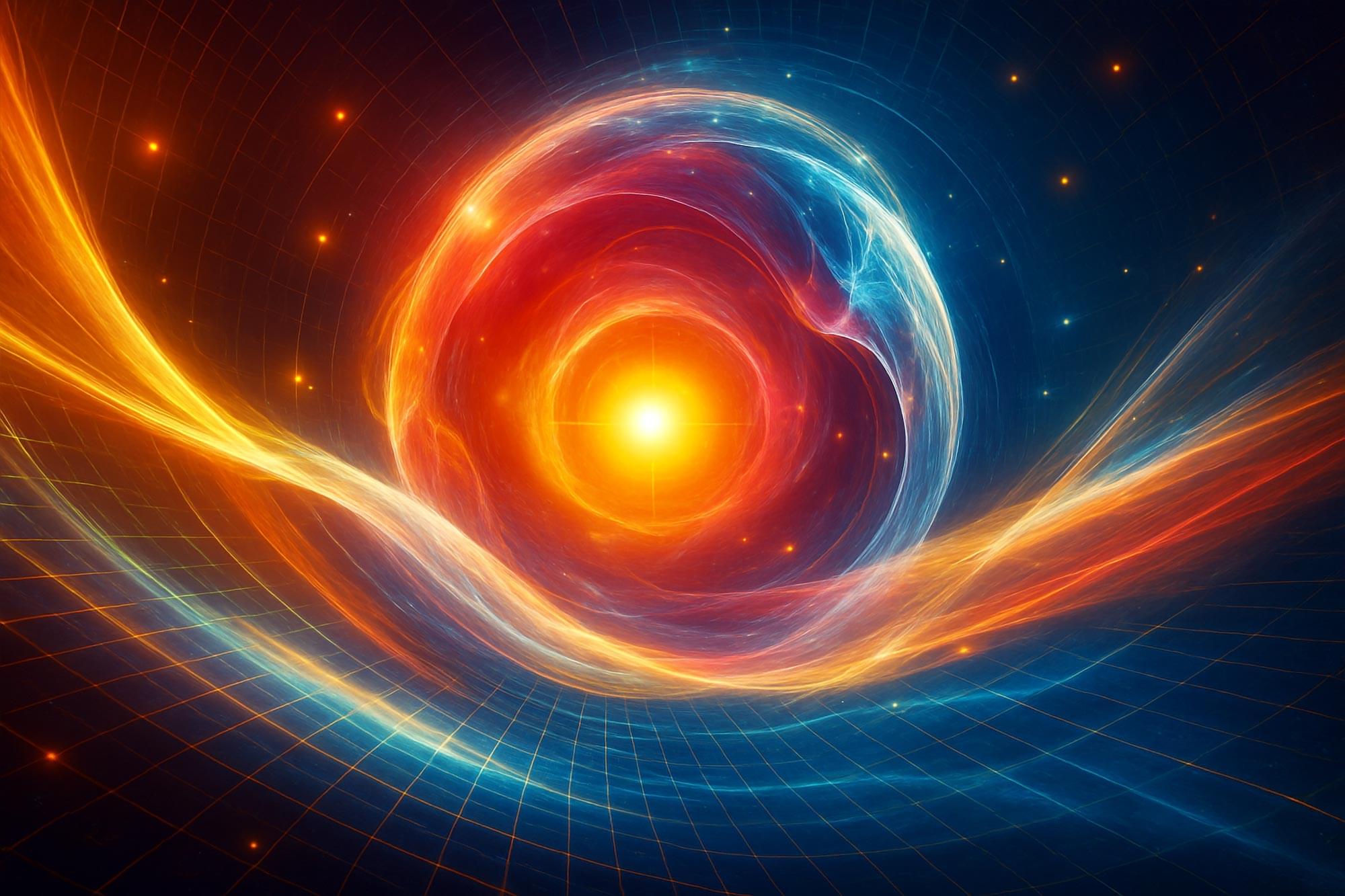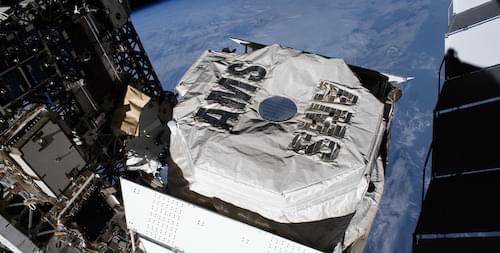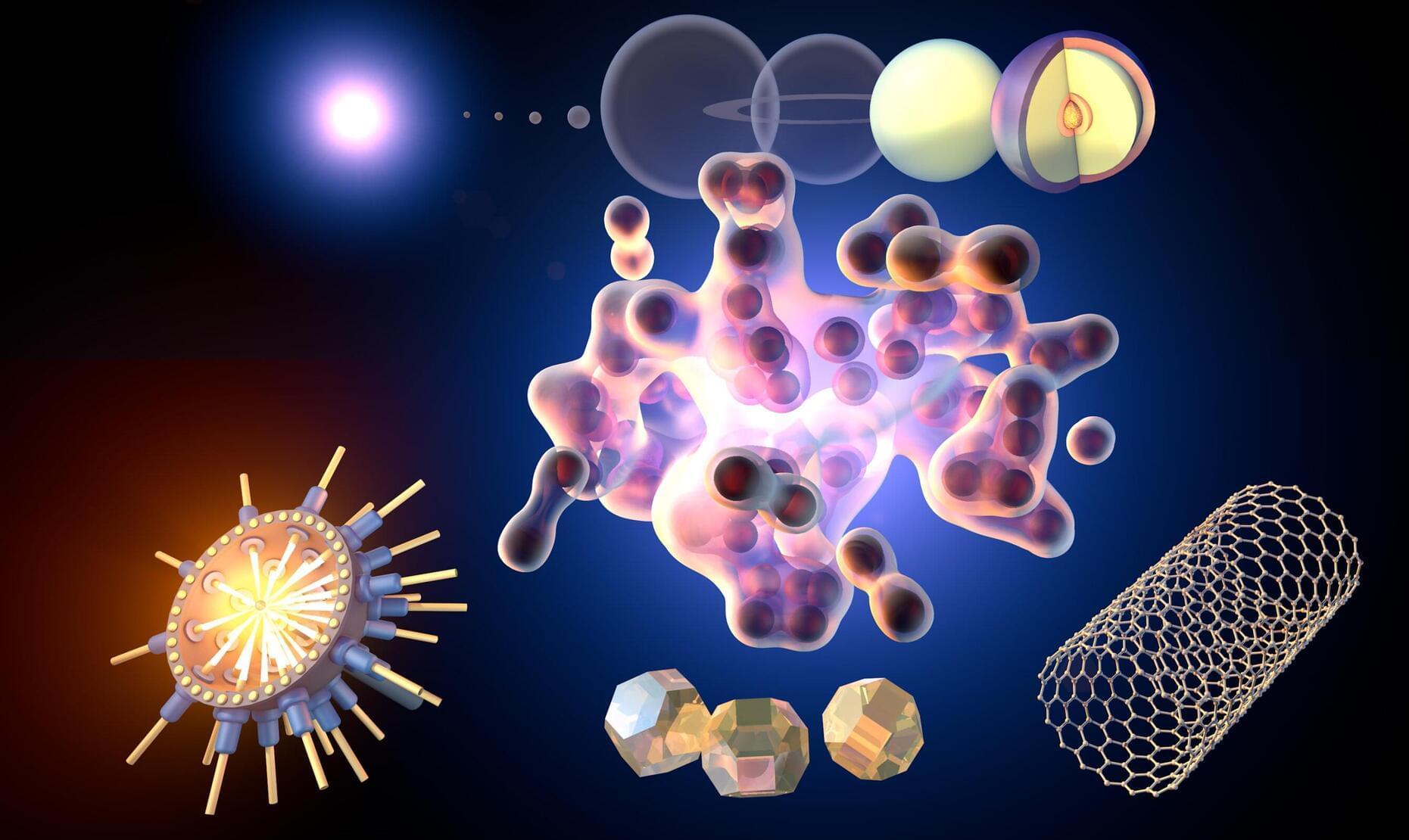Physicists test the holographic principle in a quest to merge gravity with quantum theory.





Laser frequency combs are light sources that produce evenly spaced, sharp lines across the spectrum, resembling the teeth of a comb. They serve as precise rulers for measuring time and frequency, and have become essential tools in applications such as lidar, high-speed optical communications, and space navigation. Traditional frequency combs rely on large, lab-based lasers. However, recent advancements have led to the development of chip-scale soliton microcombs, which generate ultrashort pulses of light within microresonators.
One of the key challenges for soliton microcombs is timing jitter, which refers to tiny fluctuations in the timing of their light pulses. These fluctuations, caused by environmental noise or internal instabilities, can degrade the precision and reliability of systems that rely on exact timing. For example, in lidar, jitter can cause uncertainty in distance measurements, and in high-speed data transmission, it can introduce signal distortion and reduce data integrity.
As reported in Advanced Photonics Nexus, an international research team has addressed this problem by developing a new platform based on dispersion-managed (DM) silicon nitride (Si3N4) microresonators operating at an 89 GHz repetition rate.

With the declared aim of measuring matter under extreme pressure, an international research collaboration headed by the University of Rostock and the Helmholtz-Zentrum Dresden-Rossendorf (HZDR) used the high-performance laser DIPOLE 100-X at the European XFEL for the first time in 2023. With spectacular results: In this initial experiment they managed to study liquid carbon—an unprecedented achievement as the researchers report in the journal Nature.
Liquid carbon can be found, for example, in the interior of planets and plays an important role in future technologies like nuclear fusion. To date, however, only very little was known about carbon in its liquid form because in this state it was practically impossible to study in the lab: Under normal pressure, carbon does not melt but immediately changes into a gaseous state.
Only under extreme pressure and at temperatures of approximately 4,500 degrees Celsius—the highest melting point of any material—does carbon become liquid. No container would withstand that.

A research team from the Department of Energy’s Oak Ridge National Laboratory, in collaboration with North Carolina State University, has developed a simulation capable of predicting how tens of thousands of electrons move in materials in real time, or natural time rather than compute time.
The project reflects a longstanding partnership between ORNL and NCSU, combining ORNL’s expertise in time-dependent quantum methods with NCSU’s advanced quantum simulation platform developed under the leadership of Professor Jerry Bernholc.
Using the Oak Ridge Leadership Computing Facility’s Frontier supercomputer, the world’s first to break the exascale barrier, the research team developed a real-time, time-dependent density functional theory, or RT-TDDFT, capability within the open-source Real-space Multigrid, or RMG, code to model systems of up to 24,000 electrons.

Understanding Jupiter’s early evolution helps illuminate the broader story of how our solar system developed its distinct structure. Jupiter’s gravity, often called the “architect” of our solar system, played a critical role in shaping the orbital paths of other planets and sculpting the disk of gas and dust from which they formed.
In a new study published in the journal Nature Astronomy, Konstantin Batygin, professor of planetary science at Caltech; and Fred C. Adams, professor of physics and astronomy at the University of Michigan; provide a detailed look into Jupiter’s primordial state.
Their calculations reveal that roughly 3.8 million years after the solar system’s first solids formed—a key moment when the disk of material around the sun, known as the protoplanetary nebula, was dissipating—Jupiter was significantly larger and had an even more powerful magnetic field.

Cybersecurity researchers are calling attention to a new Linux cryptojacking campaign that’s targeting publicly accessible Redis servers.
The malicious activity has been codenamed RedisRaider by Datadog Security Labs.
“RedisRaider aggressively scans randomized portions of the IPv4 space and uses legitimate Redis configuration commands to execute malicious cron jobs on vulnerable systems,” security researchers Matt Muir and Frederic Baguelin said.

Our behavioral findings indicated that TMR weakened earlier acquired aversive memories while increasing positive memory intrusions in the interference condition. To examine how TMR reactivated aversive and positive memories during NREM sleep, we extracted cue-locked, time-frequency resolved EEG responses in the interference and noninterference conditions, and compared them with the EEG responses elicited by control sounds.
We found that when compared to the control sounds that did not involve any memory pairs before sleep, both interference and noninterference memory cues increased EEG power across the delta, theta, sigma, and beta bands in frontal and central areas (Pclusters < 0.01, corrected for multiple comparisons across time, frequency, and space, Fig. 4 A–D). However, when contrasting interference with noninterference memory cues, we did not identify any significant clusters (Pclusters 0.05). These findings suggested that delta-theta and sigma-beta power increases may indicate memory reactivation during sleep.
We next examined whether cue-elicited theta and beta power were associated with subsequent memory accuracies (i.e., remembered vs. forgotten) for individual positive or aversive stimulus in the interference condition, given the relationship between theta activity and emotional processing (19), and between beta activity and memory interference during sleep (27, 34). Employing BLMM across all channels revealed that the cue-elicited theta power over the right central-parietal region (FC5, C2, C4, CP2, CP4, TP7) was significantly higher for subsequently remembered than for forgotten positive memories (mediandiff = 1.39, 95% HDI [0.32, 2.43], Fig. 4E). For aversive memories, a few channels’ (Fp2, F6, C5) theta power was higher for remembered than for forgotten aversive memories (mediandiff = 1.04, 95% HDI [0.16, 1.86]; Fig. 4F).
Last year we introduced Project Astra, our research prototype of a universal AI assistant. Since then we’ve improved memory, added computer control and enhanced voice output, and are working to bring these new capabilities to Gemini Live and other products.
Learn more about Project Astra: https://deepmind.google/technologies/.… #AIAssistant #ProjectAstra Subscribe to our Channel: / google Find us on X:
/ google Watch us on TikTok:
/ google Follow us on Instagram:
/ google Join us on Facebook:
/ google.
#GoogleIO #AIAssistant #ProjectAstra.
Find us on X: / google.
Watch us on TikTok: / google.
Follow us on Instagram: / google.
Join us on Facebook: / google.